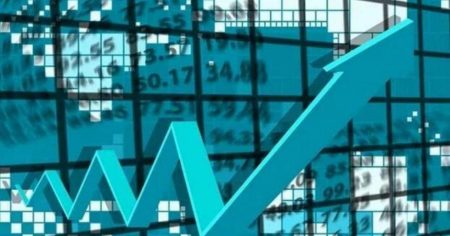Today, European stock markets continued to fluctuate but closed in positive territory for the third consecutive session, with Milan up by 0.74%. This was largely influenced by the performance of Wall Street, which gained momentum after a weak opening. The Nasdaq rose by 0.4% and the Dow by 0.7% as they attempted to recover from losses in the past four sessions. The Dow had experienced 8 declines in the previous 10 sessions. Prysmian and Campari were the top performers in the Ftse Mib index today, both industrial companies rising by over 2%. On the other hand, Telecom Italia and Saipem experienced losses of nearly 2%. The price of oil continued to decline, with Brent trading at just over $87 per barrel compared to almost $91 two days ago, while the US WTI was at $82.7. Gas prices rose to 32.2 euros per megawatt hour, and the Euro-Dollar exchange rate saw a slight increase to 1.068. The dollar weakened for the second consecutive day against Asian currencies.
The fluctuating nature of European stock markets can be attributed to a variety of factors, including trends in global markets and economic indicators. In this case, the positive performance of Wall Street helped boost European markets, as investors sought to recover from recent losses. The resilience of the Nasdaq and Dow Jones indices signaled a possible reversal of the downward trend seen in previous sessions. Prysmian and Campari, as top gainers in the Ftse Mib index, reflected investor confidence in the industrial sector, while losses in Telecom Italia and Saipem highlighted challenges faced by certain companies. The decline in oil prices, despite gas prices rising, may have implications for energy markets and consumer spending.
The weakening of the dollar against Asian currencies for the second day in a row suggests ongoing volatility in currency markets. This could be influenced by a range of factors, such as interest rate policies, trade dynamics, and geopolitical tensions. The Euro-Dollar exchange rate, however, saw a slight recovery, indicating relative stability in the Eurozone. The impact of these currency fluctuations on global trade and investment flows remains to be seen. Overall, the interconnectedness of financial markets underscores the importance of monitoring trends across different regions to assess potential risks and opportunities.
Looking ahead, market participants will continue to focus on key economic data releases and corporate earnings reports to gauge the health of the global economy. Uncertainties surrounding geopolitical events, such as trade tensions and political developments, may also impact market sentiment. It will be important for investors to remain vigilant and adapt to changing market conditions in order to make informed decisions. By staying informed and diversifying their portfolios, investors can mitigate risks and take advantage of opportunities in a dynamic market environment. As the European stock markets remain on an upward trajectory despite fluctuations, investors will need to carefully assess market trends and economic indicators to navigate the evolving landscape.
In conclusion, the European stock markets closed in positive territory for the third consecutive session, with Milan up by 0.74% thanks to the positive performance of Wall Street. The resilience of the Nasdaq and Dow indices helped boost investor confidence, while Prysmian and Campari emerged as top gainers in the Ftse Mib index. The decline in oil prices and the slight recovery of the Euro-Dollar exchange rate reflect ongoing volatility in global markets. As investors navigate these uncertainties, staying informed and adapting to changing market conditions will be crucial for making informed decisions and managing risks effectively.



